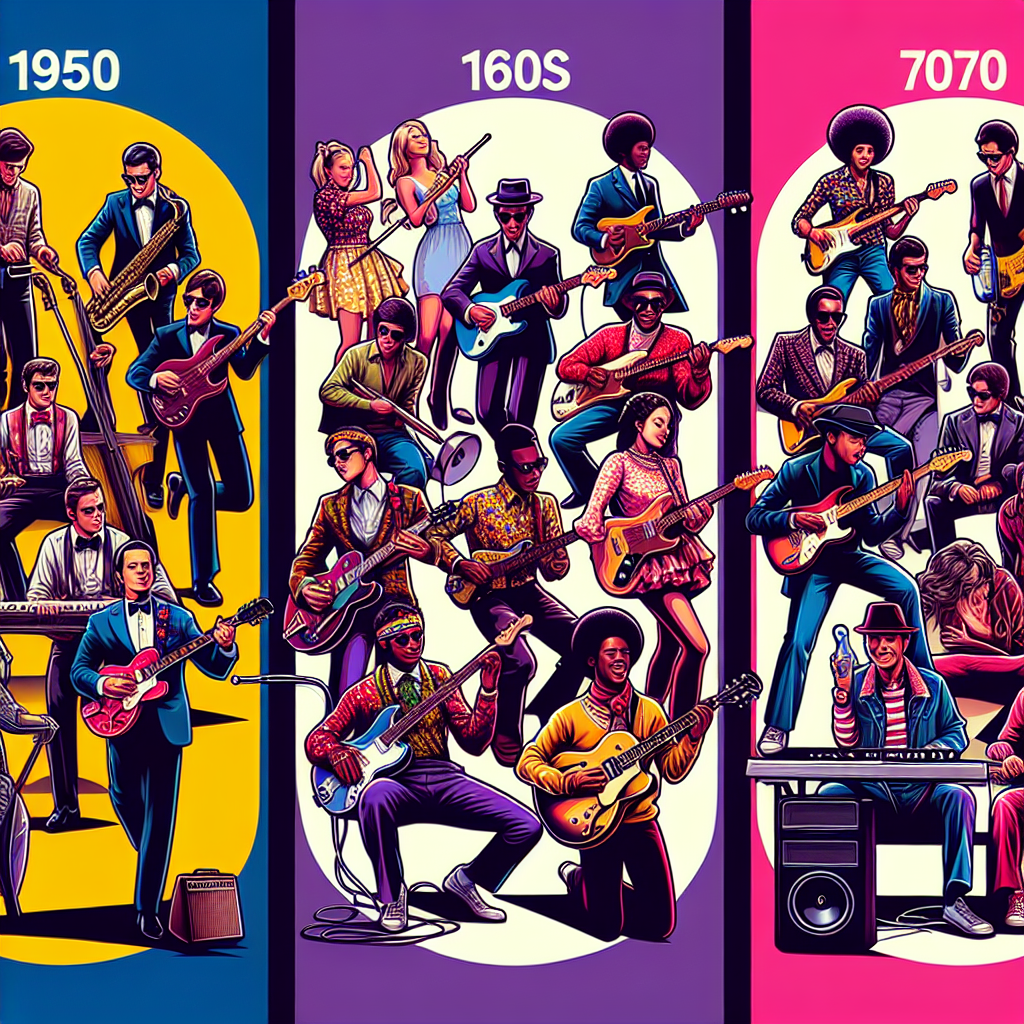Rock and roll music has been a defining genre in the history of modern music. Its evolution over the decades reflects changes in culture, politics, fashion, and technology. Let’s take a look back at the music of the 50’s, 60’s, and 70’s and appreciate how it has shaped our world.
The 1950s: The Birth of Rock and Roll
In the 1950s, rock and roll emerged as a new style of music that combined elements of rhythm and blues, country, and gospel. Artists like Elvis Presley, Chuck Berry, and Little Richard brought this new sound to mainstream audiences. The music was rebellious and energetic, reflecting the changing attitudes of post-war youth.
Politicians at the time were often critical of rock and roll, viewing it as a corrupting influence on young people. However, the music continued to grow in popularity despite these criticisms. Fashion also played a role in shaping the image of rock stars, with leather jackets, pompadour hairstyles, and tight jeans becoming iconic symbols of the era.
The 1960s: The Golden Age of Rock
The 1960s saw rock and roll reach new heights of creativity and innovation. Bands like The Beatles, The Rolling Stones, and The Who pushed boundaries with their experimental sounds and lyrics. The music became more politically charged as artists used their platform to speak out against war, inequality, and social injustice.
Technology also played a significant role in shaping the music of this decade. The invention of the electric guitar allowed for louder and more distorted sounds, while advancements in recording techniques made it possible to create complex arrangements in the studio.
The 1970s: Rock Goes Mainstream
By the 1970s, rock had become a dominant force in popular culture. Bands like Led Zeppelin, Pink Floyd, and Queen sold out stadiums around the world with their epic performances. The music continued to evolve with subgenres like punk rock and glam rock emerging as new forms of expression.
Fashion trends in the 70s reflected this diversity with artists embracing everything from glittery jumpsuits to ripped jeans. Politicians also began to recognize the power of rock music as a tool for connecting with young voters.
In Conclusion
Looking back at the evolution of rock and roll from the 1950s to the 1970s is a reminder of how far we’ve come as a society. This genre has always been about pushing boundaries and challenging norms – both musically and culturally.
As we continue into the future, let’s remember the impact that rock music has had on our lives. It has inspired generations to think differently about art, politics, fashion, technology – all while bringing people together through its universal language.


Get involved!
Comments